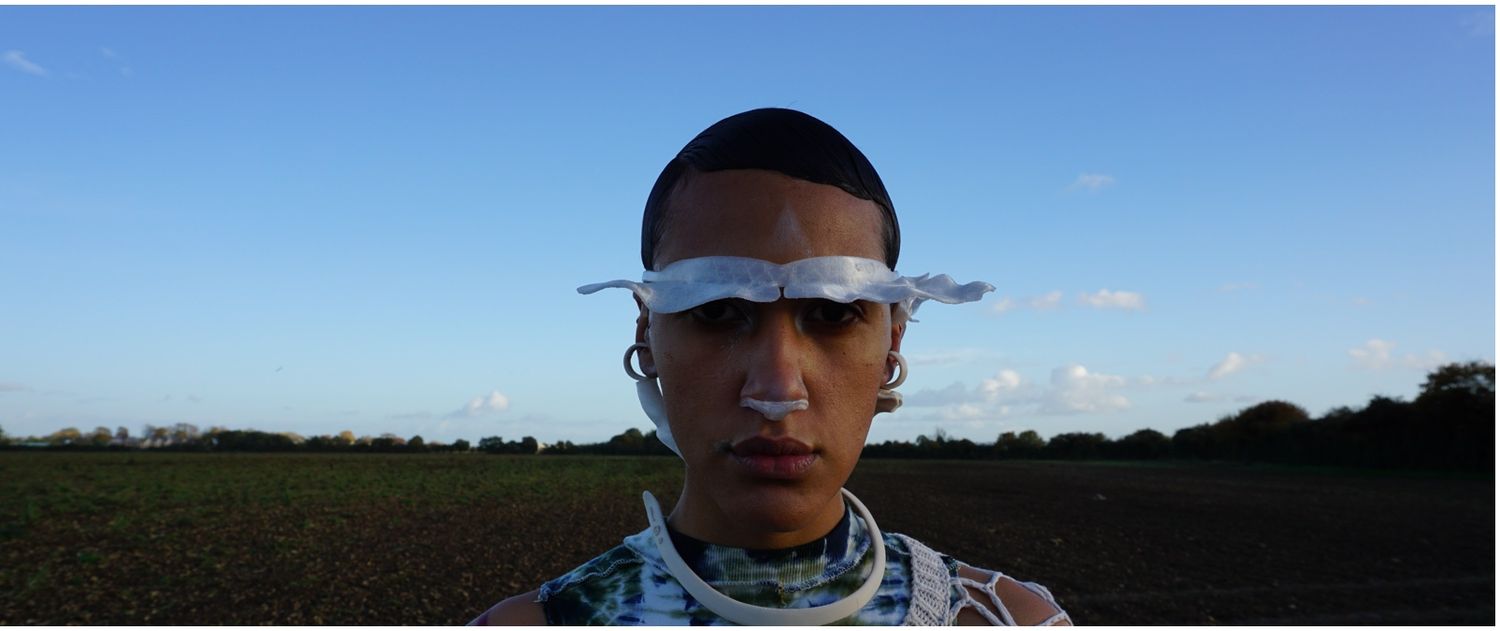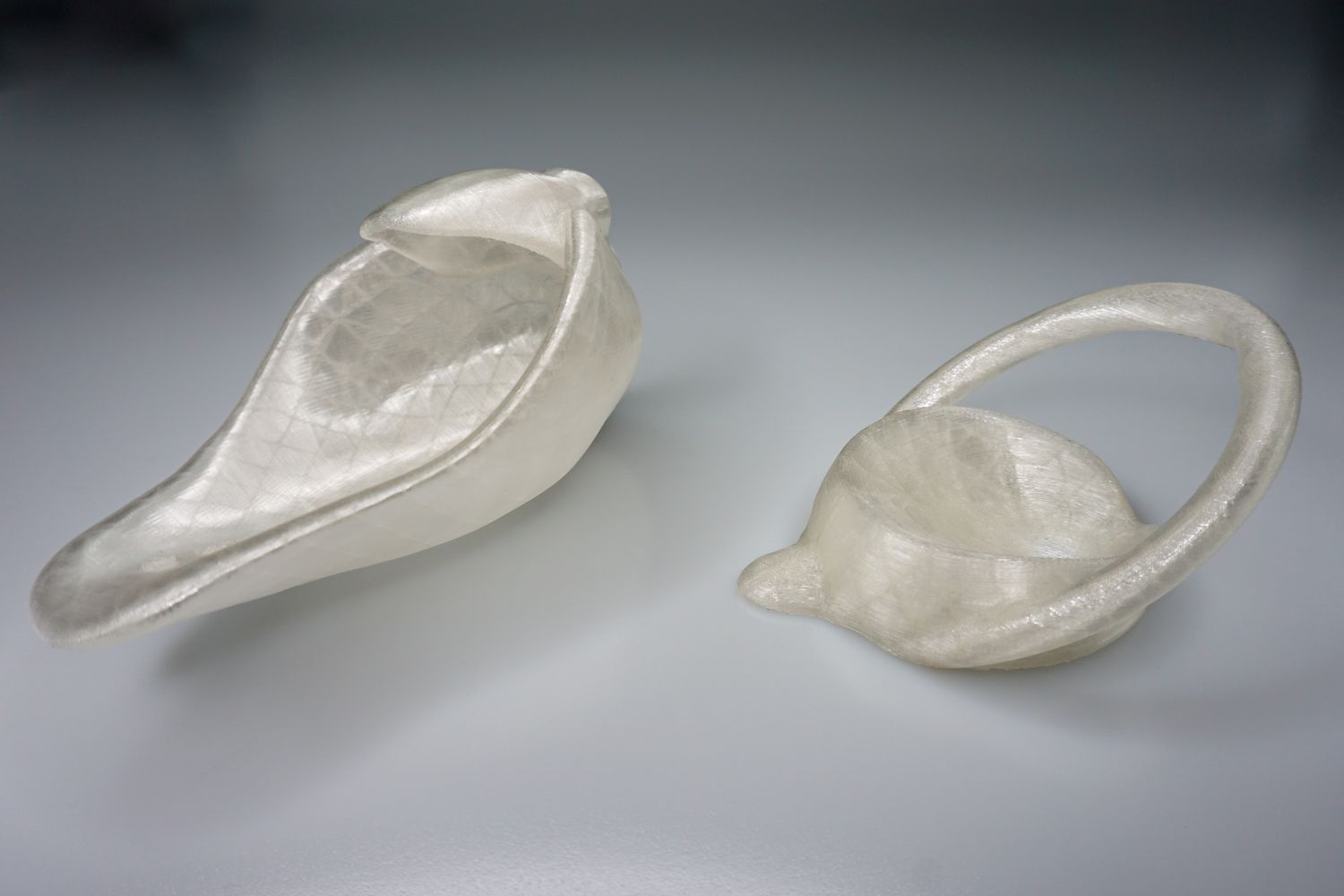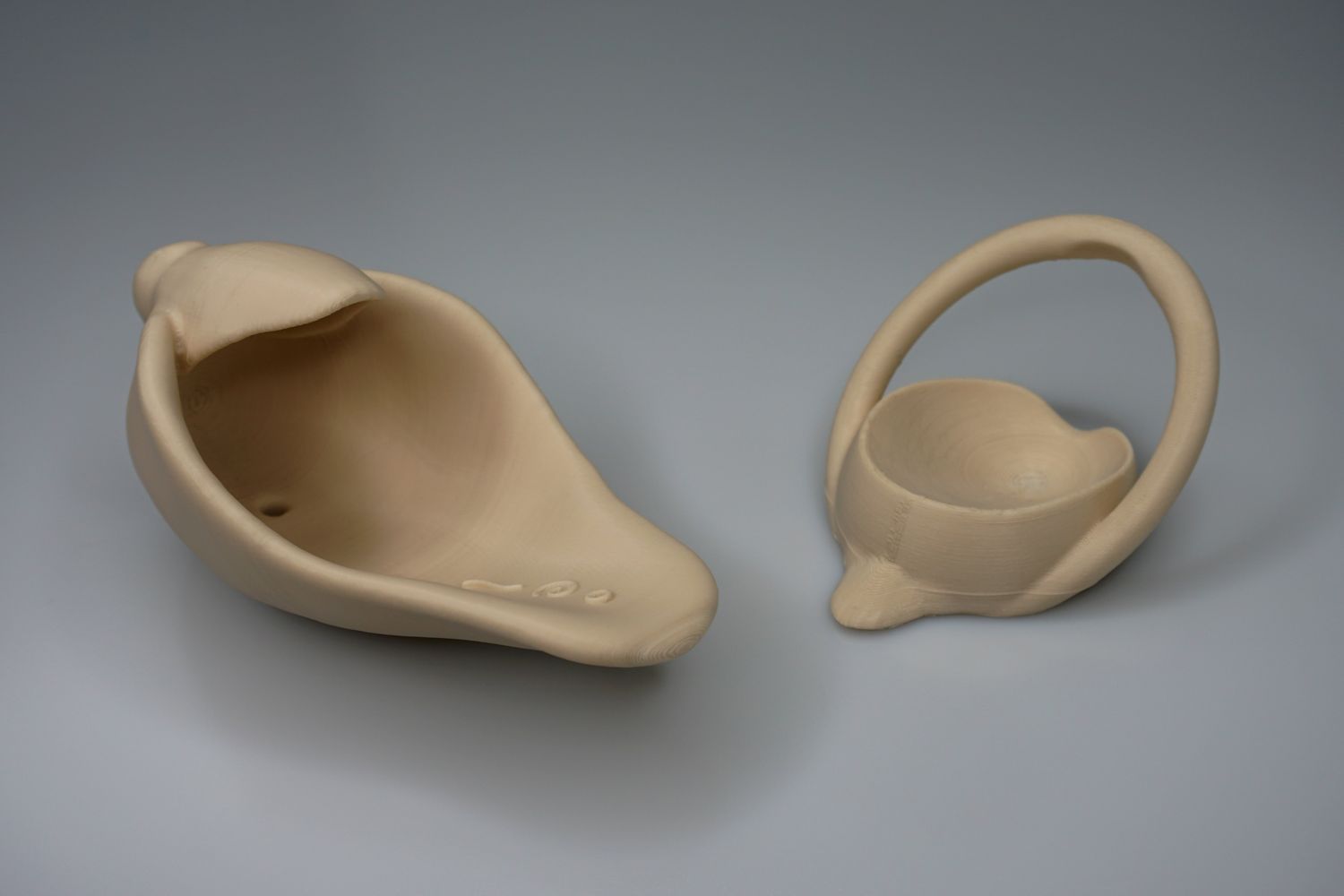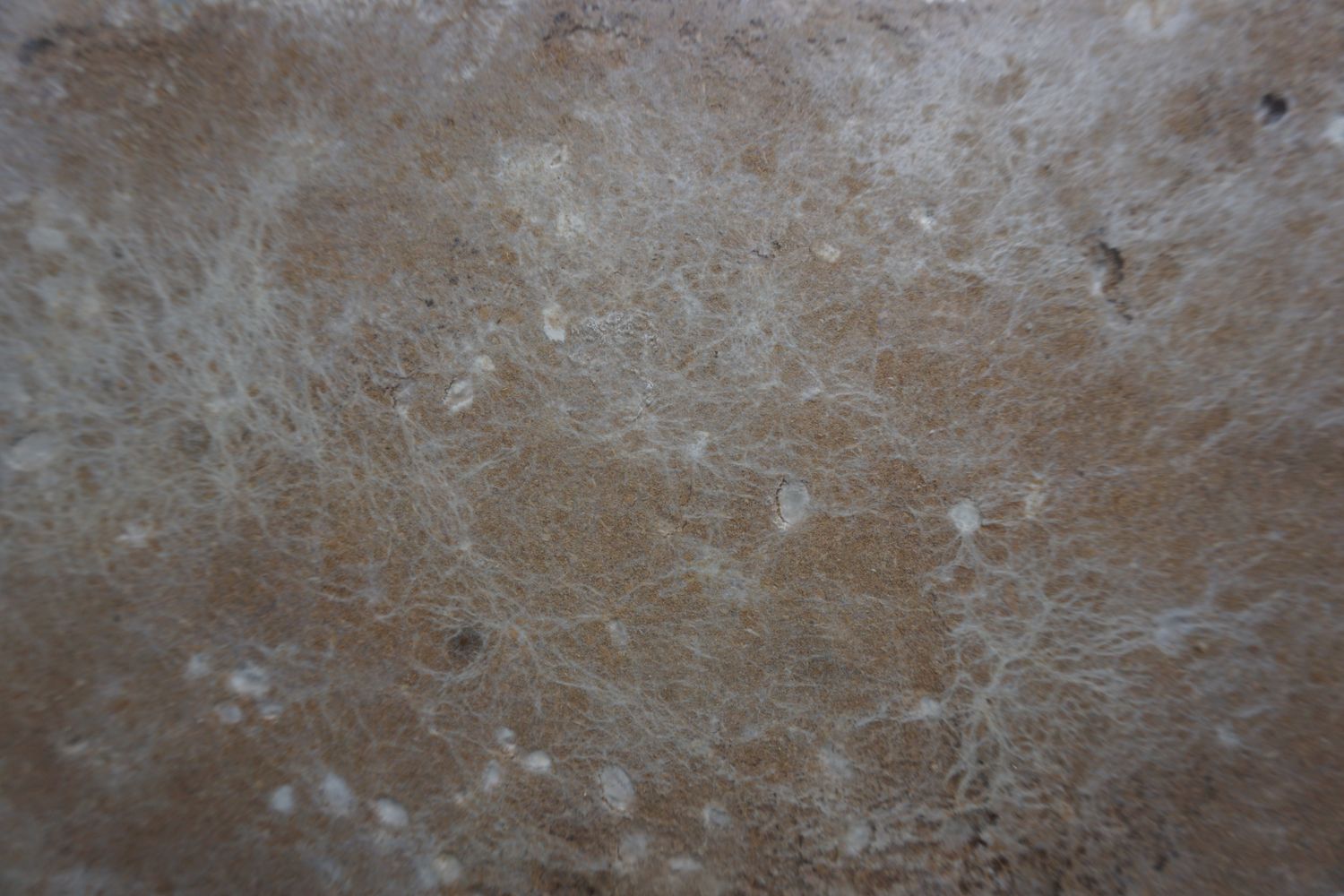About

The Studio
Leo is a designer who works in both the digital and physical realms. They sculpt in virtual reality and 3D print in renewable and natural materials. Using 3D scans of a head or face, Leo sculpts and prints made-to-measure Masks and Modulars for a customisable experience to be an avatar in reality.
PLA
PLA, or polyactide is a renewable thermoplastic polymer. The starch (glucose), from plants such as corn or sugar cane, is extracted and converted into dextrose by the addition of enzymes. To make 1kg of PLA, approximately 2.65kg of corn is required. This is fermented by microorganisms into lactic acid, which in turn is converted into polyactide. Polymerisation produces long-linked molecular chains whose properties resembles those of petroleum-based polymers.
PLA is compostable, but only in an industrial composting plant where there is controlled temperature (above 55-70’C), humidity and the presence of microorganisms. Under these industrial composting conditions, PLA can be biologically degraded within a few days, up to a few months. However, due to the current lack of infrastructure, it can be difficult to compost PLA industrially or to recycle it.
PLA prints and print support material can be ground down, heated and reformed into reusable 3D printer filament - If you wish to feed your Talisman back into the Cycle, email studio@leocarlton.com

FLAX
Bio-composite printing filaments are those formed by a PLA base and a natural fibre filler with added mineral substances. The fibre filler can act as a reinforcement, improving the mechanical properties of the material, or provide aesthetic properties to the material by its colour or texture. Natural fibres can come from crops such as flax, hemp, wood, paper waste or crop by-products such as cellulose. Reprocessing could be possible up to three times without major loss of properties in the case of PLA/flax composites, which is a good result for a polymer promoted for its biodegradability.

here are some of our plans -
The future
As stewards of our Earth, we have a responsibility for what we consume during our time here and must be accountable for the waste we leave behind.
- continue exploring available renewable and recyclable 3D printing filaments and their unique properties.
- acquire an industrial grinder and filament extruder to integrate the Cycle process on site.
- plant trials begin as we grow the raw materials on site to experiment with. Until then, we rely on sourcing the best alternatives.
- continue mycelium development and experimenting with local substrates with an aim to be self-sufficient & self-sustaining.

Site by Dan Beaven, 3D byZach Beech